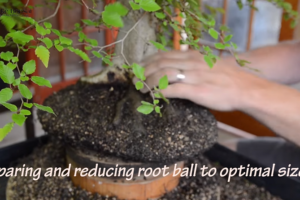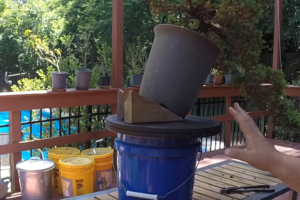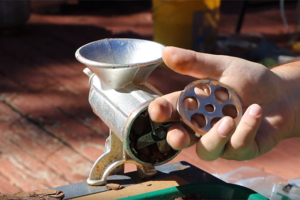All you need to know about Bonsai Pots
During this video, Peter will explain why choosing the Bonsai pot is an integral part of creating bonsai.
Bonsai Pots is a subject dear to my heart and as some of you will know the word Bonsai is made up of two separate words Bon and Sai which simply means a pot and a tree. But simply having a tree in a pot doesn’t make a bonsai. It’s the entire composition of the tree in the bonsai pot that makes the work of art.
We have a huge array of pots on the nursery ranging from the Japanese Tokoname, Yixing, Chinese, British pots, antique Japanese pots as well as plastic pots, and a variety of other pots. The history of bonsai is inextricably linked with the history of Chinese ceramics and horticulture. You could probably go back 2000 years when the Chinese were making high-fired ceramics. Ceramics is pottery clay which is fired over 900 – 1200 centigrade. From very early on the Chinese discovered that by firing at these high temperatures they would get these beautiful pots and containers. While making their ceramics they also made flower pots. They discovered that putting plants in these ceramics made the plant and the pot more beautiful so the two fused together and hence the word Bonsai. They aren’t just ordinary plants in flower pots but artistic plants in artistic pots. That is how the art of bonsai developed.
In 1967 I became very interested in studio ceramics – London and the British Art scene in the 1960’s was the be-all and end-all of all art (David Hockney and the Beetles in those days). London was thriving with culture and art. Around the same time, there was also a movement in ceramics called Studio Ceramics which was started by Bernard Leach a lot of people were inspired by him. And I started to make ceramics in the 60’s when I didn’t know anything about Bonsai Pots. Also in 1967, I was making a lot of contemporary pots and sculptured ceramics these were my experiments with pots.
There are four key criteria in choosing a pot and these are;-
size (bigger the pots the bigger the tree)
shape (rectangle, oval, deep cascade etc)
style (ornate, plain)
color (blue, green brown, cream, unglazed.
The basics rule of thumb is for example if the height of the tree is a meter then the length of the pot would be about half a meter but you can break the rules. It depends on the style of the bonsai you want to create. The thicker the trunk the deeper the pot you’d use.
Certain trees are called masculine and some feminine this describes some of the characteristics of the tree i.e chunky and rugged would be masculine and dainty, delicate and pretty trees would be considered feminine.
Masculine trees would generally suit rectangular pots and the more delicate or feminine bonsai would usually suit oval or circular pots. There are no hard and fast rules they are just guidelines.
As bonsai is an art form and all lining arts need to evolve you will find that there are artists that have developed new concepts of pots. So there are many different shapes and styles of pots.
We make landscapes in different shaped pots some in ovals and some rectangles.
Think of bonsai as a picture, don’t just think of bonsai as a tree in a pot it is really a picture and the pot is the frame of the composition you are making.
Bonsai Masterclass – the best guide I can offer you is a table showing the different styles of trees and the pots that will go with them.
Don’t forget the pot style is influenced by culture and the era.
Be bold in how you choose your pots and enjoy your Bonsai!
Peter Chan is a bonsai artist that lives in England and runs Heron’s Bonsai. He makes wonderful videos that are helpful to bonsai artists. These videos can be found on Heron’s Bonsai YouTube. He is the author of numerous books, including The Bonsai Beginner’s Bible and The Complete Practical Encyclopedia of Bonsai.
| Image | Name | Description | Link |
|---|---|---|---|
 | Bonsai Tree Fertilizer - No Nitrogen 0-10-10 | Nitrogen-free fertilizer for Bonsai. Use this 0:10:10 formulated without nitrogen so it doesn't promote foliage growth, this formulation still provides a balanced delivery of phosphorus and potassium to keep your Bonsai tree's root system healthy and happy. Made with natural-based fish. Rich in phosphorus and potassium, this unique formula stimulates budding and flowering, as well as vigorous root growth. Use this product on all types of flowering plants for abundant colorful blooms. Spring feeding pines with 0-10-10 will help reduce needle length and candle extension, and encourages sturdy shoots. Fall feeding all trees with 0-10-10 will help to prevent unseasonal soft growth that will not withstand winter. 8oz bottle contains enough to make 16 gallons. | Buy Now |
 | BioGold Organic Bonsai Fertilizer | Most popular time release organic bonsai fertilizer. Always fresh stock from Japan. Biogold is specially formulated for Bonsai, but will also work well with a wide range of plants. Fermented - no bad smells. Does not attract insects, no mold growth. Contains the three essential elements (Nitrogen, Phosphorus and Potash) and micronutrients to produce a balanced fertilizer. Triangular pellets - Will not roll off and out of your pot. | Buy Now |
 | Professional Bonsai Fertilizer Pellets | SLOW RELEASE - Special blend fertilizes immediately and throughout a 1-2 month period. 12-4-5 NPK Optimized For Fast Growth - Nitrogen (N) – for the growth of leaves on the plant. Phosphorus (P) – for root growth, flower and fruit development. Potassium (K) for overall plant health. SAFE & EASY TO USE - 1/4-inch Pellets Can Be Picked Up By Hand Or With A Spoon ENVIRONMENTALLY RESPONSIBLE - Rich In Premium Organic & Natural Ingredients To Minimize Environmental Impact EASY ZIP RESEALABLE BAG - Simply tear off the top then reseal the easy to close resealable bag over and over until you are ready to re-order fertilizer. | Buy Now |






Leave a Reply
Your email is safe with us.
You must be logged in to post a comment.